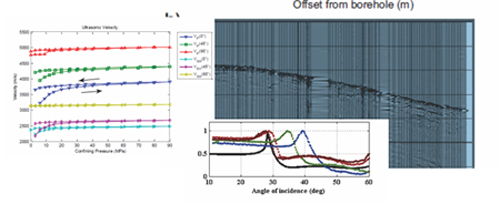Seismic Anisotropy of Rocks: Measuring, Modeling, and Meaning
By:
Douglas R. Schmitt
University of Alberta, Edmonton
Join us for coffee beginning at 10:00 a.m.

Abstract
We have known that the earth mechanically anisotropic since the very first attempts by Mallet In the 1860's to measure both seismic wave propagation and rock anisotropy. Today, although everyone one knows that both the structure of the earth and the materials which form it conspire towards anisotropy nearly everywhere, we still mostly try to avoid it as much as possible in our analyses.
One reason for this is that we often do not have solid quantitative measures of the anisotropy so that we can properly incorporate it. The problem must be resolved at many scales, and indeed, Is often scale dependent. In this talk, I will provide a brief review of some of the interesting implications of elastic anisotropy, show how we attempt to measure it in the laboratory with examples taken from metamorphic and unconventional rocks, and give an example of a larger km-scale measurement of anisotropy in a relatively homogeneous formation from a borehole seismic experiment.
If time permits, I will show some of our results on the laboratory study of the reflectivity from anisotropic materials. I will also comment on what the implications of these various measures might be. In particular, what 'fractures' are we talking about when we blame them for inducing seismic anisotropy?




